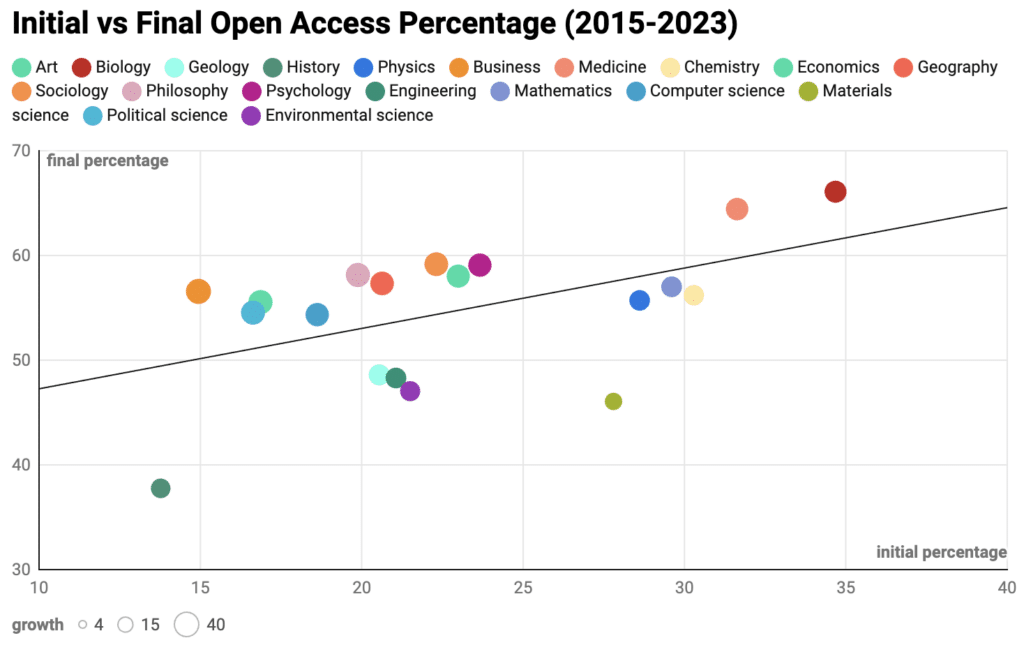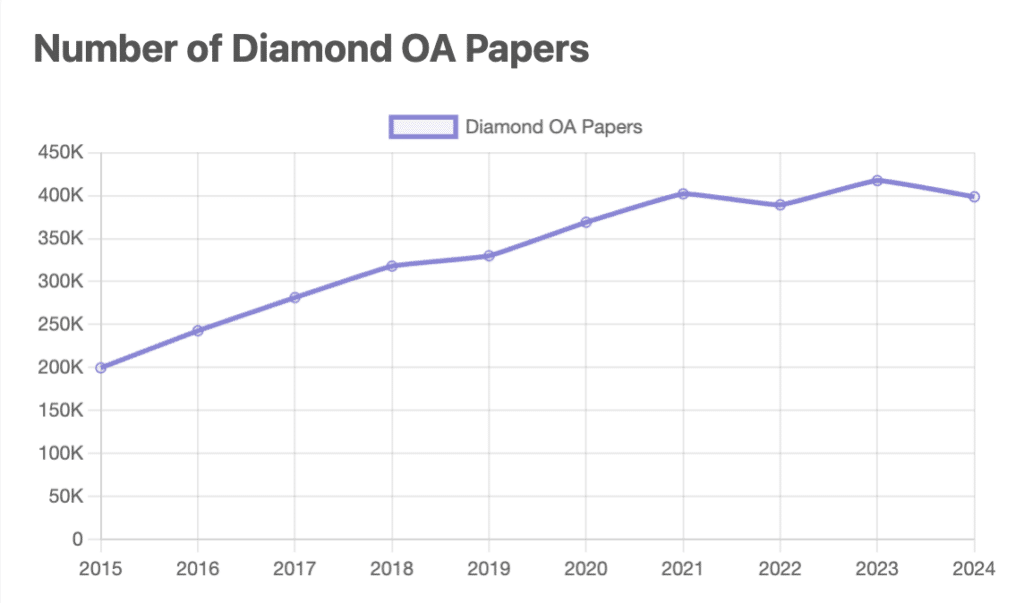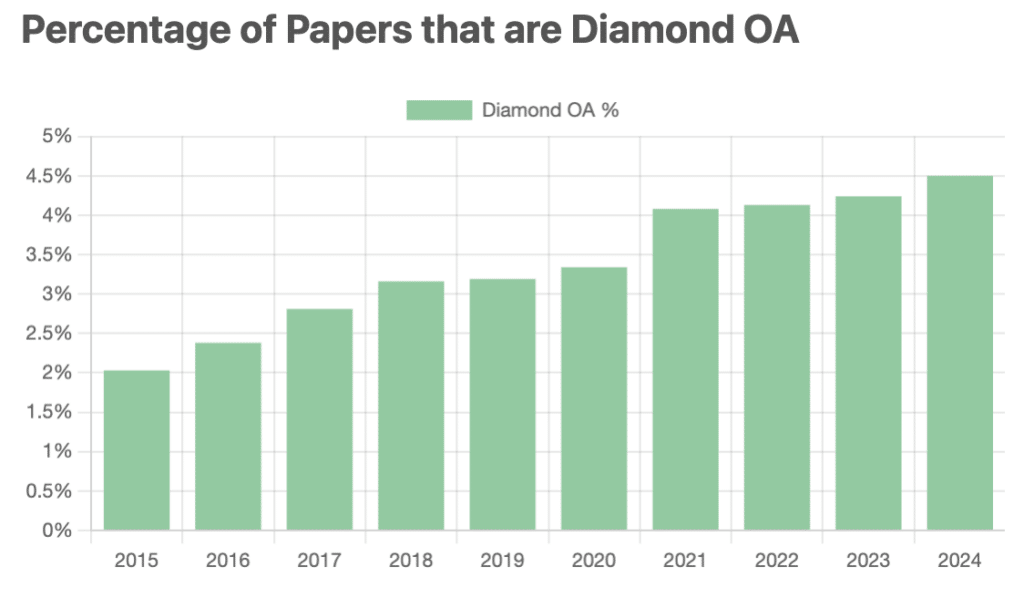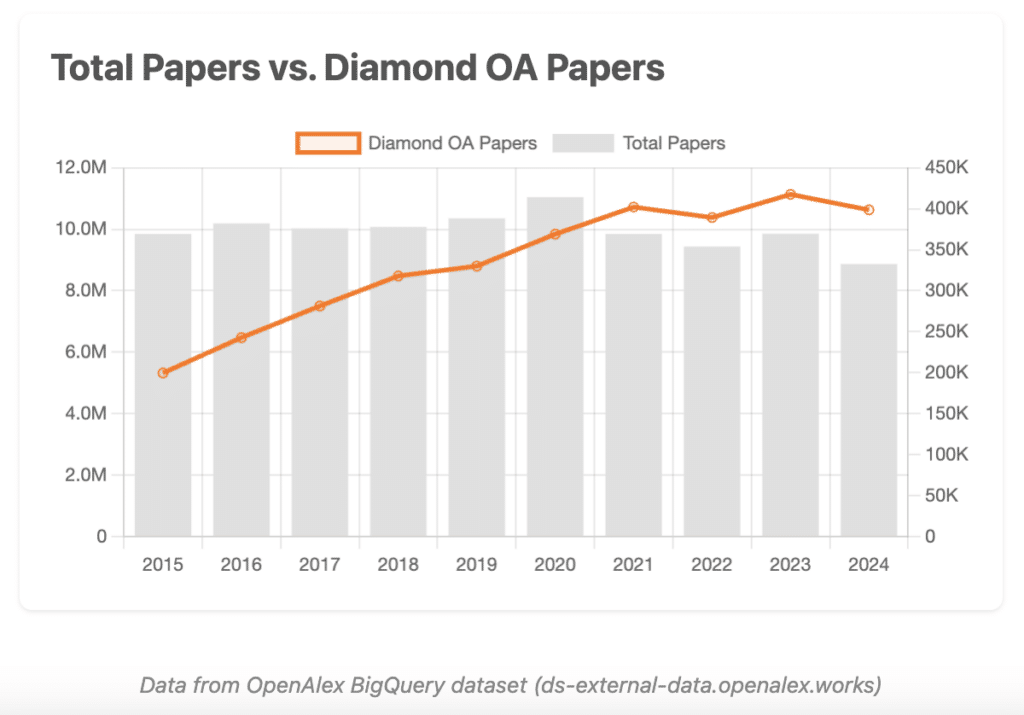A few years ago, I wrote that Open Access is an inevitability. And in many ways, the data supports that view—at least at a glance.

Gold Open Access—the model where authors (or their funders) pay article processing charges to make work freely available—has grown steadily over the past decade. But if you look closely, the growth is slowing. And what’s taking its place isn’t the altruistic, community-powered model many hoped for. Instead, Hybrid Open Access is filling the gap: a model where paywalled journals charge extra to make select articles open.
Diamond Open Access—where publishing is free for both authors and readers, supported by institutions rather than APCs—has been making headlines. But here’s the uncomfortable truth: we still don’t have enough data to know whether Diamond OA is actually growing or simply being talked about more.
A system stuck in the middle
Digging into Dimensions data layered on top of OpenAlex, a clear pattern emerges. Gold OA’s momentum is slowing. But instead of researchers turning to Green OA (self-archiving in repositories) or Diamond OA, many are choosing Hybrid OA instead.
Why?
Because researchers chase visibility, reputation, and prestige. That often means publishing in high-impact journals—many of which are owned by legacy publishers who now offer hybrid models. These options give authors a way to comply with funder mandates without sacrificing perceived academic clout.
Institutions and libraries, meanwhile, are under pressure to show open access progress. Hybrid OA, while expensive, is a politically safe way to do that. It’s the administrative equivalent of checking a box—even if it means paying twice.
Transformative agreements like Read and Publish deals have only accelerated this trend, redirecting subscription budgets to cover OA fees—effectively normalizing hybrid publishing in many disciplines.

A new vision emerges
But while the hybrid tide rises, a quiet revolution is underway.
In 2022, a coalition of organizations—Science Europe, cOAlition S, OPERAS, and ANR—launched a bold Action Plan to support Diamond OA. Their goal: to build a truly equitable, community-driven publishing ecosystem, where knowledge is a public good and the costs are shouldered collectively—not by individual researchers.
This vision took shape through the DIAMAS project and culminated in the creation of the Diamond OA Standard (DOAS). Think of DOAS as a blueprint: a framework to help Diamond journals measure, improve, and sustain quality.
It’s built on seven pillars:
- Legal ownership, mission, and governance
- Open science practices
- Editorial management and research integrity
- Technical service efficiency
- Visibility and impact
- Equity, diversity, inclusion, and multilingualism
- Continuous improvement
Together, these components aim to professionalize Diamond OA without compromising its values. They send a clear message: if scholarly communication is a public good, then it must be shaped and governed by the scholarly community itself.
The missing link: Measurable growth
Despite this momentum, the numbers tell a more sobering story.
Early data from OpenAlex paints the picture that Diamond OA has plateaued in terms of publication volume. Enthusiasm and infrastructure have grown—but the data doesn’t reflect this.



Why the disconnect? Part of the issue is visibility. At Digital Science, we would love a better way to track Diamond Open Access growth. DOAJ lists 1,369 journals as being “without fees”, but there seem to be many edge cases resulting in a landscape that isn’t black and white.
It is also true that many Diamond journals operate with limited marketing, uncertain technical infrastructure, and fragmented funding. And despite the ideals, many researchers still don’t see them as viable options for career advancement.
What comes next?
There are reasons for optimism. The DIAMAS project isn’t just advocating for Diamond OA—it’s building the scaffolding. Its service portal offers templates, best practices, and technical guidance to help journals align with DOAS standards and professionalize their operations. The European Diamond Capacity Hub (EDCH) serves as a coordination center for Diamond OA stakeholders in Europe. Launched alongside the EDCH, the ALMASI Project focuses on understanding non-profit OA publishing in Africa, Latin America, and Europe.
The pieces are falling into place for equitable open access solutions. What’s needed is adoption and quantification. Funders and Institutions should include equitable OA in their promotion criteria. Researchers must see it as a credible home for their work. If anyone knows of faster ways to get clean data for Diamond, please reach out.
The path forward exists. But like any path, it only becomes clear by walking it. If you are working in this space and have this data, we would love to disseminate it through our tools at Digital Science.




